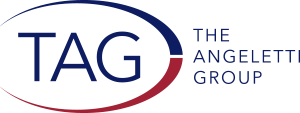Planned Giving Best Practices
With competition for philanthropic dollars greater than ever before, fundraisers are getting creative with strategies to identify and pursue impactful gifts. While new and innovative approaches are always needed, the answer to larger, more impactful gifts may be in your donor database already: planned gift prospects.
Planned gifts represent a significant fundraising upside—they are often 200 to 300 percent larger than annual gifts. But with myriad, day-to-day responsibilities (the annual fund, this year’s gala, social media, a new campaign, etc.), it’s easy for fundraisers to put planned giving on the back burner. As a result, too often planned gifts are surprise “bonuses” with little planning involved.
By using some key planned giving strategies, an organization of any size can put in place a systematic planned giving program and approach it with the same rigor and intentionality as major gifts. Utilize these five steps to incorporated planned giving best practices.
1) Identify prospects.
Start with people who already know you (and like you!): your existing donors. Do a database deep dive to pinpoint donors and prospects who fit the profile as potential planned gift donors. Look for key traits such as age (43% of individuals setting up gifts to charity in their wills were found to be under 55) and loyalty (planned gift donors are often not your most wealthy donors—but they most likely will have demonstrated an affinity for your cause over time).
2) Infuse planned giving language into your existing messaging.
Invest in identifying, educating and cultivating prospects so when donors are ready to discuss charitable estate plans, they think of you. Educate and communicate in plain language how to name your organization as the beneficiary of a donor’s estate. In certain cases, the donor benefits from a planned gift by receiving a sizable tax break, without interfering with life expenses.
3) Brand your planned giving program; celebrate the opportunity.
Introduce a legacy society with special benefits for members who indicate a bequest or planned gift. A recent study found that fewer than 1 donor in 14 had informed the charity that they had named as a beneficiary. Encourage donors to come forward by putting planned giving front and center alongside all of your fundraising materials and across all channels. Personal testimonials add influence and confidence for donors to consider a planned gift.
4) Ask for blended gifts.
Planned giving enables people to make large, meaningful gifts that they may not be able to make during their lifetimes, while leaving a unique legacy to support causes they care about during their lifetimes and beyond. A recent study found that 70% of donors who made planned gifts did so because they were asked. Position solicitations as a blended gift: part annual support, part special project/campaign, and part planned gift. This works particularly well for endowments which are built over generations.
5) Treat planned giving donors well—they are just as important, if not more important, than your largest donors.
Recognize deferred gifts as emphatically as recognizing current gifts. One of the best recognition vehicles for a planned gift is a legacy society. Honoring donors, in turn, encourages other potential donors to make planned gifts. Be sure to keep your planned gift donors properly stewarded and engaged during the time period between their announcement of their gift and the point that you receive the gift.
Planned giving is an important part of any well-rounded fundraising program and, with a few enhancements, your organization may see a significant increase in funds by embracing planned giving best practices.
The Angeletti Group can help guide improving your organization’s philanthropy efforts. Contact us today to discuss your needs.


